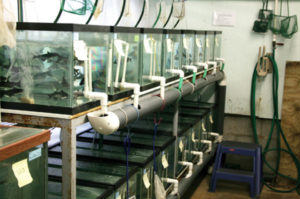
Hybrid, channel catfish show similar immune responses to ich parasite
In a study, the authors evaluated the immune responses and host protection of hybrid catfish and channel catfish against the ich parasite (Ichthyophthirius multifiliis).
Iron compounds in fish contribute significantly to lipid oxidation in addition to oxidation mediated by enzymatic activity. The main iron-containing compounds are myoglobin and hemoglobin.

In a study, the authors evaluated the immune responses and host protection of hybrid catfish and channel catfish against the ich parasite (Ichthyophthirius multifiliis).

Hyper-intensive nursery systems for juvenile shrimp production present significant opportunities for shrimp farmers to increase profits. Nursery culture results in strong, healthy and uniform juveniles with great potential for compensatory growth when stocked in production ponds. Nurseries produce a maximum number of juveniles of a desired weight, and their use can reduce production costs by shortening time in growout ponds and increasing pond efficiency through additional cycles per year.
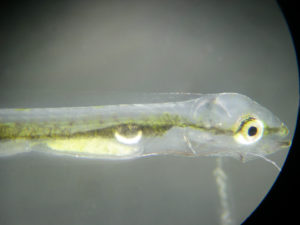
After experiencing disappointing survival rates following traditional artemia-based rearing protocols, the French hatchery Aquastream turned to a micropellet alternative to artemia.

Monitoring of Vibrio bacteria in shrimp larvae determined a relationship among hepatopancreas color, bacteria concentration and signs of early mortality syndrome.
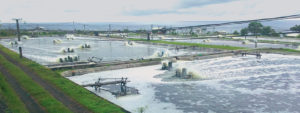
Although Bali is primarily a tourist destination, several small family-owned shrimp farms are located here. The Ndaru Luat Setio shrimp farm at Kubu raises specific pathogen-free Litopenaeus vannamei in ponds that apply basic biofloc technology with zero water exchange.
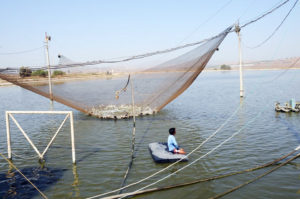
The introduction of tilapia to irrigation reservoirs in Israel improved the efficiency of water usage and reduced the cost of water needed for tilapia culture. Although requiring considerable investment, many dual-use reservoirs were constructed and equipped for efficient harvesting.
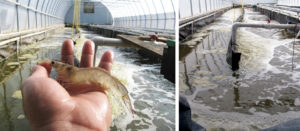
A trial in a lined, greenhouse-enclosed raceway evaluated the use of a heterotrophic biofloc system equipped with aeration, supplemental oxygen injection and centralized heating to achieve good shrimp production.
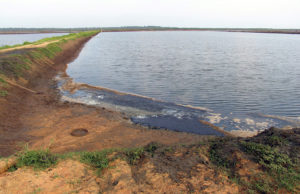
Nitrite, an intermediate compound in the oxidation of ammonia nitrogen to nitrate by nitrifying bacteria in soil and water, is considerably more toxic than nitrate. Exposure to nitrite causes gill lesions and edema in the skeletal muscles of fish, and also affects respiration.
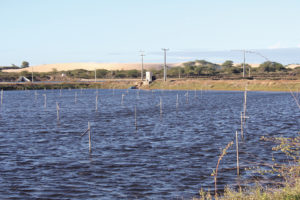
Ideally, farmers need to create conditions that make it harder for the pathogenic Vibrio that causes AHPN to colonize animals’ stomachs and for the toxin to produce its pathology. Exclusion where possible and appropriate management of ecosystems offer hope in addressing AHPN.
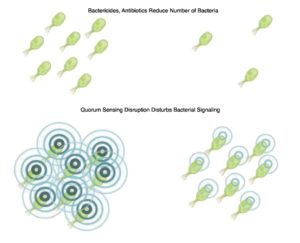
The pathogenicity of early mortality syndrome in shrimp is likely regulated by quorum sensing, which allows the Vibrio bacteria that colonize shrimp guts to coordinate the release of the toxin that damages shrimp digestive systems.
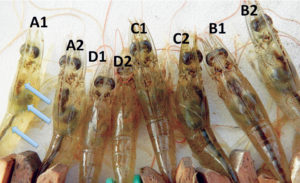
A laboratory study at the University of Arizona examined the effects of tilapia to control EMS and mortality in Pacific white shrimp.in controlling AHPN.

Slaughter methods can impact product quality. It is recommended that fish be fasted prior to slaughter to clean their digestive tracts. Instant killing minimizes the degradation of tissue quality. Immediate bleeding is more important than the bleeding method.
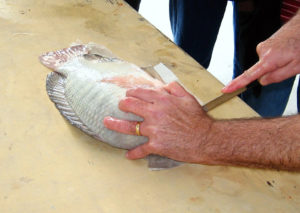
All methods of slaughter have issues related to animal welfare. However, approaches such as death in air or bleeding without stunning have been particularly cited as unacceptable.
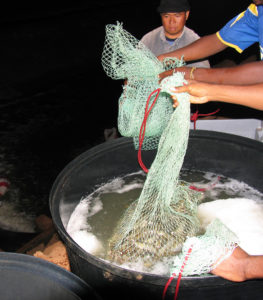
The methods used to kill fish depend on many factors, including fish size and species, aquaculture production system, fish quantity, market preferences and effects on product quality. Also, some methods may not be approved in some countries, as with the use of anesthetics and regulations concerning the ethical treatment of animals.

After six weeks of experimental culture, comparable growth and survival were recorded in juvenile Gulf corvina raised at salinities of 5, 15, 25 or 35 ppt. Coupled with stable plasma osmolality values observed in fish at the varied salinities, these results confirmed the euryhaline nature of this species, a trait that could enhance its status as a candidate for aquaculture.